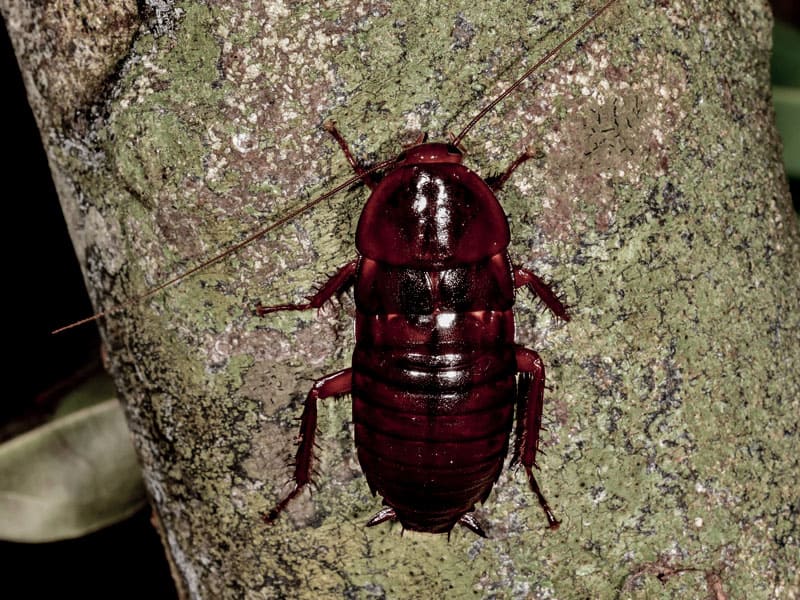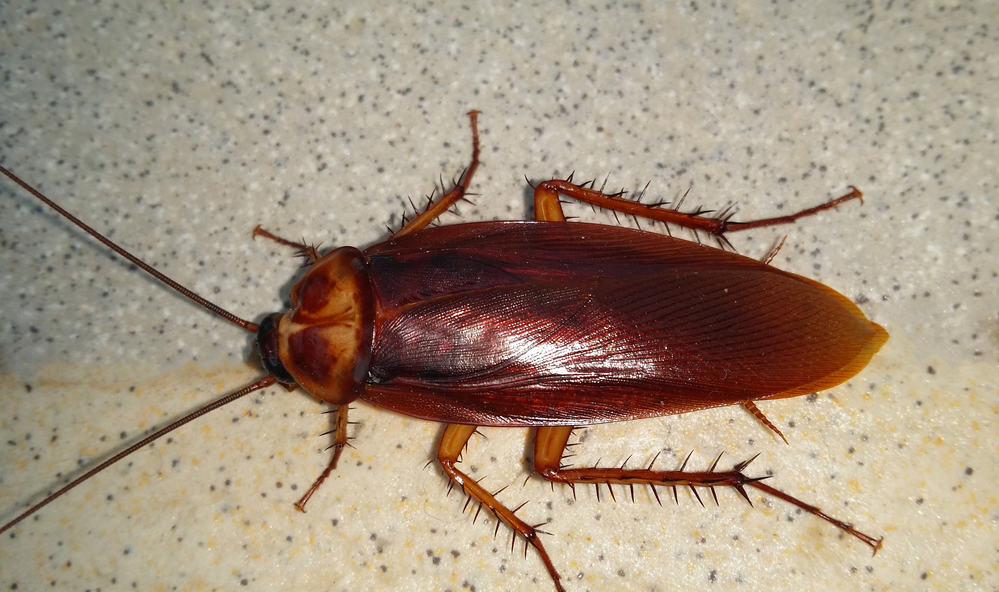The term “palmetto bug” is often used to describe certain species of cockroaches, especially in the southern United States. This article explains the similarities and differences between typical cockroaches and palmetto bugs, shedding light on this common terminology confusion.
POINTS
- Cockroaches and palmetto bugs, while often used interchangeably, refer to different species; palmetto bugs are a type of cockroach commonly found in the southeastern United States and are associated with several species, including the American cockroach.
- Palmetto bugs prefer outdoor habitats with warm, humid climates and are known for their larger size compared to common cockroaches, with some species capable of reaching up to 3 inches in length.
- Both cockroaches and palmetto bugs can pose significant health risks, as they are capable of spreading allergens, bacteria such as Salmonella and E. coli, and potentially harboring parasitic worms.
- Effective control and prevention strategies for these pests include maintaining cleanliness to remove food and moisture sources, sealing entry points, proper food storage, and professional pest control services if necessary.
- Accurate identification of the specific pest is crucial for implementing the most effective control methods, and this can be done by observing size, color, behavior, and habitat.
Cockroach vs. Palmetto Bug: Definitions, Names, and Basic Differences
When it comes to household pests, few are as notorious as the cockroach and the palmetto bug. While these terms are often used interchangeably, they refer to different species with unique characteristics. Understanding the distinctions between these pests is crucial for effective identification, control, and prevention.
What Are Cockroaches and Palmetto Bugs?
Cockroaches are resilient insects from the order Blattodea, notorious for their presence in homes and businesses worldwide. These pests are known for their adaptability and hardiness, making them a common challenge in pest control. The term “palmetto bug,” however, is a colloquial expression primarily used in the Southeastern United States and refers to several species of large cockroaches that often seek refuge under the leaves of palmetto trees.
The palmetto bug nickname is not species-specific. It can describe various cockroach species that share similar large and imposing characteristics. According to the authoritative “Mallis Handbook of Pest Control” by Arnold Mallis, the term is most frequently associated with the following cockroaches:

Eurycotis floridana, commonly known as the Florida woods cockroach, which prefers the humid environments of the southeastern states.

Periplaneta fuliginosa, or the smoky brown cockroach, is recognized by its uniform brown color and affinity for warm, moist areas.

P. australasiae, the Australian cockroach, which, despite its name, is also found in the United States, particularly in the south.

P. americana, the American cockroach, is one of the largest species commonly referred to as a palmetto bug, especially when encountered in the southern U.S.

P. brunnea, the brown cockroach, which is similar in habits to the American cockroach but slightly smaller in size.

Blaberus craniifer, known as the death’s head cockroach, is less common in homes but can be included in the palmetto bug category due to its size.
Understanding that “palmetto bug” can refer to various cockroach species is crucial for accurate identification and effective pest control. While these insects share the palmetto bug moniker, they each have unique behaviors and preferences that influence the best methods for their management.
Exploring the Various Names and Terms
The variety of names for palmetto bugs can cause confusion when trying to identify and address a pest problem. These insects are often referred to by various colloquial terms depending on the region and the individual’s familiarity with the species. Besides “palmetto bug,” you might hear names such as “palmetto roach,” “palm meadow bug,” or “palmetto cockroach.” All these terms point to the same group of large, typically outdoor-dwelling cockroaches that have a reputation for occasionally invading homes.
- Palmetto Roach is another common term that emphasizes the insect’s association with palmetto trees and its classification as a cockroach.
- Palm Meadow Bug is a less common variation of the name, which may stem from a mishearing or blending of “palmetto” and the bug’s presence in grassy or meadow-like areas.
- Palmetto Cockroach is a term that explicitly connects the insect to the cockroach family, highlighting its biological classification.
While these names may vary, they all refer to the same type of pest – one that is typically larger and more robust than the average house cockroach, and often associated with specific regions in the United States.
Basic Physical and Behavioral Differences
When distinguishing between general cockroaches and palmetto bugs, it’s important to note both physical and behavioral differences:
Physical Differences:
- Size: Palmetto bugs are generally larger than other cockroach species, with some reaching over 1.5 inches in length.
- Color: They often exhibit a reddish-brown to a dark brown coloration, which can help in identification.
- Wings: Palmetto bugs have wings and are capable of flight, although they are not particularly adept at it and prefer to run or glide short distances.
Behavioral Differences:
- Habitat Preference: While many cockroach species prefer indoor environments, palmetto bugs are more commonly found outdoors, taking shelter under the protective fronds of palmetto trees or in other damp, dark environments. They may enter homes in search of food or to escape extreme weather conditions.
- Activity Patterns: Palmetto bugs are nocturnal and are most active at night when they forage for food. They tend to avoid light and will scurry away when exposed.
- Diet: These pests are omnivorous and will eat a wide variety of organic matter, but they have a particular affinity for decaying plant material, which is abundant in their natural outdoor habitats.
Understanding these differences is key to identifying whether you’re dealing with a common cockroach or a palmetto bug. Proper identification is the first step in implementing the right control measures to manage these pests effectively.
Habitats, Geographical Distribution, and Size Comparison
Palmetto bugs and cockroaches have adapted to thrive in various environments, but they do have preferred habitats and distinct geographical distributions that can affect their presence in your home or business.
Typical Habitats and Geographical Distribution
Palmetto bugs, particularly those species commonly found in Florida and other southeastern states, favor warm, humid climates. They are often associated with:
- Outdoor Spaces: These insects are typically found in palmetto and other tree canopies, within piles of leaves, mulch, and brush, as well as in flower beds and gardens.
- Indoor Areas: When they do venture indoors, palmetto bugs seek out similarly warm and moist environments, such as basements, bathrooms, kitchens, and laundry rooms.
In contrast, many cockroach species are more cosmopolitan and can be found in a variety of climates and locations around the world. They often infest:
- Urban Environments: Cockroaches are common in city settings, where they inhabit sewers, drains, and can easily move between apartments and commercial buildings.
- Residences: Within homes, they tend to hide in cracks and crevices, behind appliances, and anywhere food and moisture are accessible.
Physical Size Variations
When discussing size, palmetto bugs are generally among the larger species of cockroaches:
- Palmetto Bugs: The size of these bugs can be alarming, with some species like the American cockroach reaching lengths of up to 3 inches. Their size is often a contributing factor to the fear and discomfort they cause when encountered.
- Common Cockroaches: Other cockroach species, such as the German cockroach, are much smaller, usually measuring around half an inch to two-thirds of an inch in length.
The significant size difference is not only a key identification feature but also influences the type of hiding spots these pests can utilize. Larger palmetto bugs require more spacious harborage areas, which is why they are less likely to infest indoor spaces as extensively as their smaller relatives.
Behavioral Traits, Lifestyle, and Species-Specific Characteristics
Understanding the behavior and lifestyle of palmetto bugs versus other cockroaches can be instrumental in managing infestations effectively. Each species has distinct characteristics that influence their survival and interaction with human environments.
American Cockroach vs Palmetto Bug
The American cockroach, often called a palmetto bug, is one of the most prevalent species to bear this nickname. Here are some key points to consider:
- Behavior: American cockroaches are known for their rapid movement and ability to fly short distances, which can be particularly startling. They are attracted to warm, damp environments and are more likely to be found in residential areas in the southern United States.
- Lifestyle: These cockroaches are nocturnal and prefer to hide during the day in dark, secluded areas. If they are seen during the day, it may indicate a large infestation.
- Species-Specific Characteristics: The American cockroach has a reddish-brown color with a yellowish figure 8 pattern on the back of its head. They can live up to two years, which is quite long for an insect, and they are capable of producing numerous offspring in their lifetime.
Typical Habitats in Human Dwellings
Palmetto bugs and cockroaches can adapt to indoor living if the conditions are right. They are typically drawn to:
- Food Sources: Kitchens and dining areas are prime targets due to the abundance of food scraps and spills.
- Water Sources: Bathrooms, laundry rooms, and basements provide the moisture these pests need to survive.
- Shelter: Cracks, crevices, and clutter offer ideal hiding spots for cockroaches to rest and breed.
By understanding these preferences, homeowners can take proactive steps to make their environments less inviting to these pests.
Species-Specific Characteristics
Each cockroach species has its own set of characteristics that can affect how it interacts with its environment:
- German Cockroach: This small, brownish cockroach is known for its rapid breeding cycle and is more likely to infest kitchens and food preparation areas.
- Oriental Cockroach: Often found in cooler, damp areas such as basements and drains, these cockroaches are darker in color and less adept at climbing smooth surfaces.
- Brown-Banded Cockroach: Preferring warmer and drier areas, this species can often be found higher up in rooms, such as in upper cabinets.
By recognizing these species-specific traits, you can tailor your pest control efforts to be more effective against the particular type of cockroach you are dealing with.
Health Concerns, Hygiene, and Control Measures
Cockroaches and palmetto bugs are not just a nuisance; they can also pose significant health risks. Their presence in human dwellings is associated with several hygiene concerns and potential diseases.
Health and Hygiene Concerns
- Allergens: Cockroach droppings, shed skins, and other detritus can contribute to allergies and asthma, particularly in children and sensitive individuals.
- Pathogens: These pests can carry bacteria such as Salmonella and E. coli on their bodies, which can contaminate food surfaces and lead to food poisoning.
- Parasites: Cockroaches can also harbor parasitic worms and other harmful organisms that can affect human health.
Maintaining a clean and sanitary living environment is essential to minimize the health risks associated with these pests.
Effective Control and Prevention Strategies
Given the health risks, controlling and preventing infestations is a top priority. Here are some strategies that can be effective against both cockroaches and palmetto bugs:
- Sanitation: Regular cleaning to remove food debris, spills, and excess moisture can greatly reduce the attractiveness of your home to these pests.
- Exclusion: Seal cracks and crevices, repair screens, and install door sweeps to prevent entry.
- Proper Food Storage: Keep food in sealed containers and avoid leaving pet food out overnight.
- Trash Management: Use garbage cans with tight-fitting lids and regularly dispose of trash to avoid providing a food source for pests.
- Baits and Traps: These can be effective in reducing populations when placed in areas of high activity, but should be used as part of a comprehensive pest control strategy.
- Professional Pest Control: For severe infestations, or to ensure complete eradication, professional pest control services may be necessary.
It’s important to consider the similarities and differences between cockroaches and palmetto bugs when implementing control measures. For example, since palmetto bugs are more likely to live outdoors, focusing on exterior preventative measures can be particularly effective.
Clarifying Misconceptions and Accurate Identification
Misconceptions about cockroaches and palmetto bugs can hinder effective control. One common myth is that palmetto bugs are not as dirty or harmful as other cockroaches. However, any cockroach species can carry disease and cause allergies, so it’s important to address any infestation seriously, regardless of the specific type.
Accurate Identification for Proper Pest Control
Being able to accurately identify the pest you’re dealing with is critical to choosing the right control methods. Here are some tips for accurate identification:
- Size and Color: Note the size, color, and any distinctive markings on the insect.
- Behavior: Observe the pest’s behavior, such as flight capability or whether it’s seen more commonly during the day or night.
- Habitat: Consider where the pest was found; is it primarily indoors, or did it come from an outdoor environment?
By accurately identifying the pest, homeowners and pest control professionals can ensure that the most effective strategies are employed to manage the infestation. Remember, a targeted approach based on the specific habits and preferences of the pest will yield the best results in pest control.



